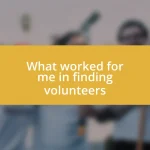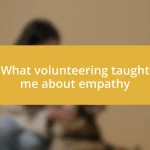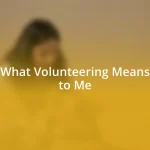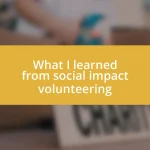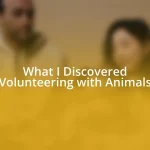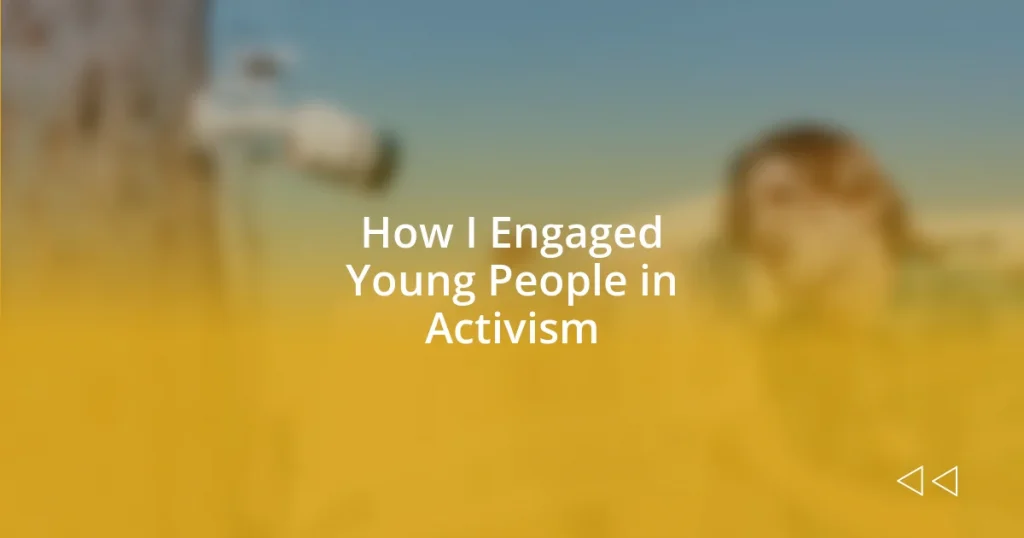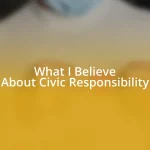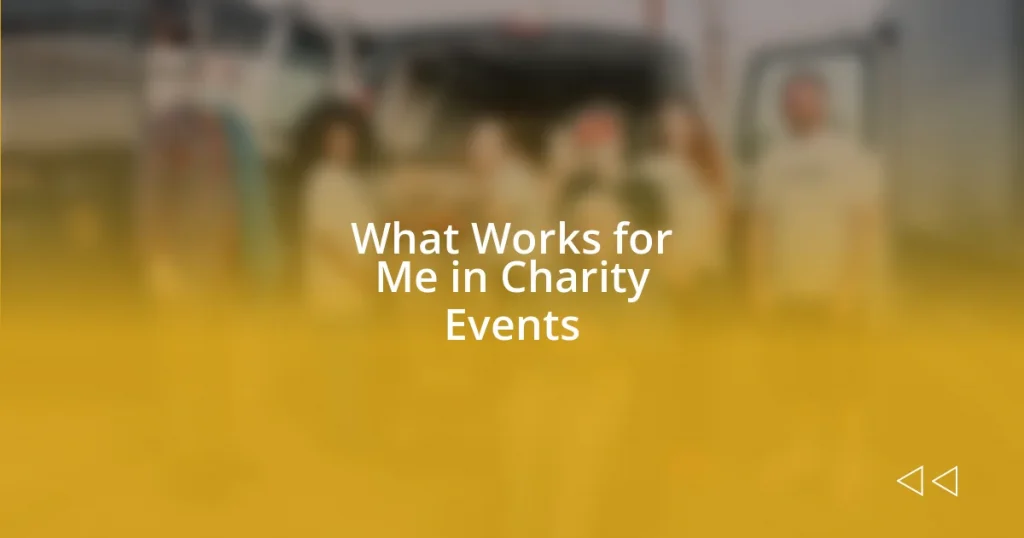Key takeaways:
- Engaging young people in activism is most effective when causes resonate personally, tapping into local experiences and emotions.
- Social media serves as a powerful tool for outreach, fostering community through visual storytelling, interactive content, and highlighting youth voices.
- Creating inclusive events and structured training empowers young leaders, enhances participation, and fosters deeper connections and shared goals within communities.

Identifying Relevant Causes for Engagement
When I was trying to find causes that resonate with young people, I remembered my own experience of feeling overwhelmed by societal issues. The key for me was to identify causes that not only felt urgent but also personal; for example, the impact of climate change on my community lit a fire within me. By connecting such issues to local experiences, I found a unique way to engage my peers and inspire their activism.
I often wonder, how do we find causes that truly speak to the youth? I realized it’s about listening to their stories and understanding their passions. One time, during a casual conversation, a friend shared how pollution affected her family’s farm. This resonated deeply, highlighting that causes related to personal and community struggles usually spark genuine interest. It made me think: if we can tap into those emotions, we can cultivate real commitment and action.
In my journey, I discovered that social media plays an essential role in connecting young people with their causes. For instance, sharing stories of environmental activists on platforms like Instagram can create a powerful sense of community. Watching friends engage with content that reflects their values encouraged me to curate discussions around themes they care about, like mental health or racial justice, making activism feel accessible and relevant to their lives.

Utilizing Social Media for Outreach
Utilizing social media to reach young people has been a game-changer in my activism efforts. Platforms like TikTok and Twitter aren’t just for casual scrolling; they’re dynamic spaces where social issues can ignite a passion within an audience hungry for change. I remember posting a video about a local clean-up event that not only showcased the impact but also encouraged peers to join. The comments flooded in, filled with enthusiasm and questions, proving that when young people see tangible, relatable actions, they’re eager to engage.
Here are some strategies I’ve found effective in harnessing social media for outreach:
- Visual Storytelling: Sharing before-and-after photos of community projects captivates attention and illustrates impact visibly.
- Interactive Content: Polls and questions in stories can encourage participation and feed discussions.
- Hashtags for Reach: Crafting unique hashtags helps to create a sense of belonging and makes tracking involvement easier.
- Highlighting Youth Voices: Featuring young activists in posts empowers others to share their narratives and adds authenticity to the cause.
Each of these elements not only sparks interest but builds a community around the causes we care about, making activism a collective journey rather than a solitary pursuit.

Creating Inclusive Community Events
Creating inclusive community events is vital in engaging young people in activism. I’ve seen firsthand how ensuring accessibility encourages participation. One memorable event I organized featured a community potluck intended to bring folks together over shared meals. Not only did we invite diverse groups, but we also ensured the venue was accessible to individuals with disabilities. As I watched people from various backgrounds enjoy each other’s company, I felt a warmth in the air—a sense of unity blossomed that I believe can only flourish in inclusive spaces.
I often reflect on an event where we incorporated different languages in our promotional materials. This simple yet impactful change allowed non-native speakers to actively participate. By creating a welcoming space, I noticed an attendee approach me, excited to share her thoughts on climate activism in her own language. That moment underscored the beauty of inclusivity; we tapped into a wealth of ideas simply by ensuring everyone felt represented. It reminded me that when communities are engaged, everyone has something valuable to contribute.
One of my favorite strategies is partnering with local organizations that focus on underrepresented groups. For example, collaborating with a youth group centered on cultural diversity amplified our reach. By incorporating music, art, and stories from various cultures, we created an environment that celebrated differences while uniting our shared goals. I was moved by a young artist who expressed her struggle through a powerful mural at the event. Witnessing her overcome obstacles and speak passionately about her work reaffirmed my belief that inclusivity leads to deeper connections and inspires collective action.
| Strategy | Description |
|---|---|
| Accessibility | Ensuring venues are accessible for all participants promotes inclusivity. |
| Diverse Promotion | Utilizing multilingual promotional materials encourages broader participation. |
| Local Partnerships | Collaborating with local organizations enhances reach and community involvement. |

Building Partnerships with Local Organizations
Building partnerships with local organizations has been a transformative approach in my activist journey. I remember the excitement I felt when I reached out to a nearby environmental group that shared my vision. Together, we organized a series of workshops on sustainability, engaging young people to brainstorm solutions for local environmental issues. The energy in those rooms was electric. Seeing diverse young voices united, tackling challenges head-on, made me believe that collaboration amplifies our collective impact.
In many ways, working alongside local organizations feels like weaving a rich tapestry of shared knowledge and resources. I think back to a time when we collaborated with a youth mentoring program. We created outreach events where seasoned activists shared their experiences alongside young changemakers eager to learn. I witnessed the spark in their eyes as they realized that they, too, could be powerful advocates for change. This partnership not only enhanced our programming but also empowered a new generation of leaders who feel a sense of belonging in activism.
Moreover, partnering with local organizations allows us to tap into resources and networks we might not have accessed otherwise. For instance, I once collaborated with a local arts group to host an awareness campaign about mental health. Their experience in visual communication helped us craft a powerful message. I vividly recall one participant standing before us, sharing her story through a performance that left everyone silent, absorbed in her words. That moment is a testament to how compelling partnerships can elevate our activism and foster a profound sense of community among young people. Isn’t it incredible how shared passions can lead to such impactful moments?

Empowering Young Leaders through Training
When I think about empowering young leaders through training, I can’t help but recall the sense of anticipation at our first workshop. We transformed a local community center into a vibrant training ground where young minds were invited to explore activism. I remember looking around the room, watching as their eyes lit up with newfound confidence as we delved into topics like effective communication and strategic planning. That transformative moment made me realize that structured training can unlock potential, making young people not just participants, but leaders.
There was a particular training session that stood out for me. We carried out role-playing exercises that placed each participant in mock scenarios of advocacy, allowing them to practice their voices in a safe environment. One of the young attendees, a shy individual who had kept quiet throughout the workshop, took a leap of faith and passionately argued for climate action. The way her words flowed and the conviction in her tone left me chuckling with pride. I’ve seen how training doesn’t just equip young people with skills—it ignites a fire within them, empowering them to rise to the occasion.
To me, the importance of mentorship in empowerment cannot be overstated. Incorporating mentorship into our training programs has been a game changer. I recall a time when experienced activists shared their personal journeys with the trainees. One mentor, in particular, spoke about her initial struggles and how she overcame them. The vulnerability resonated throughout the room, and I saw a shift; the young leaders began to see themselves in these stories. Isn’t it fascinating how shared experiences can create such a strong bond? It’s enlightening how training, when infused with personal stories, not only imparts knowledge but also builds a connected community ready to advocate for change.

Measuring Impact and Celebrating Success
Measuring impact in youth activism isn’t just about statistics; it’s about the stories we tell and the growth we witness. I remember the day we collected feedback from our first community event. Seeing young people articulate how they felt heard and empowered was incredible. Their words were like little treasures, revealing that our efforts sparked a change in perspective, even if it was just one person. Isn’t that what we aim for—a ripple effect that spreads through our community?
One of my proudest moments came after tracking the progress of a group of young activists over six months. We had set clear goals, from organizing rallies to increasing participation in local meetings. The data showed a 30% rise in attendance at these events, but the real measure of success was the confidence shining in their eyes. One young woman grabbed the mic during a rally, and I realized that not only had we provided training; we had nurtured a leader who spoke passionately about issues affecting her community. Doesn’t it fill you with hope when you see that transformation?
Celebrating success is equally important as measuring it. After our initiative, we threw a small gathering where everyone shared their experiences and achievements. I’ll never forget the joy on their faces as they recounted their victories—the first time they spoke up at a public event or successfully initiated a discussion in school. Those moments are the fuel that keeps our activism alive. How often do we pause to celebrate progress, big or small? Recognizing and honoring each success creates a culture where young people feel validated and inspired to continue their journey in activism.
